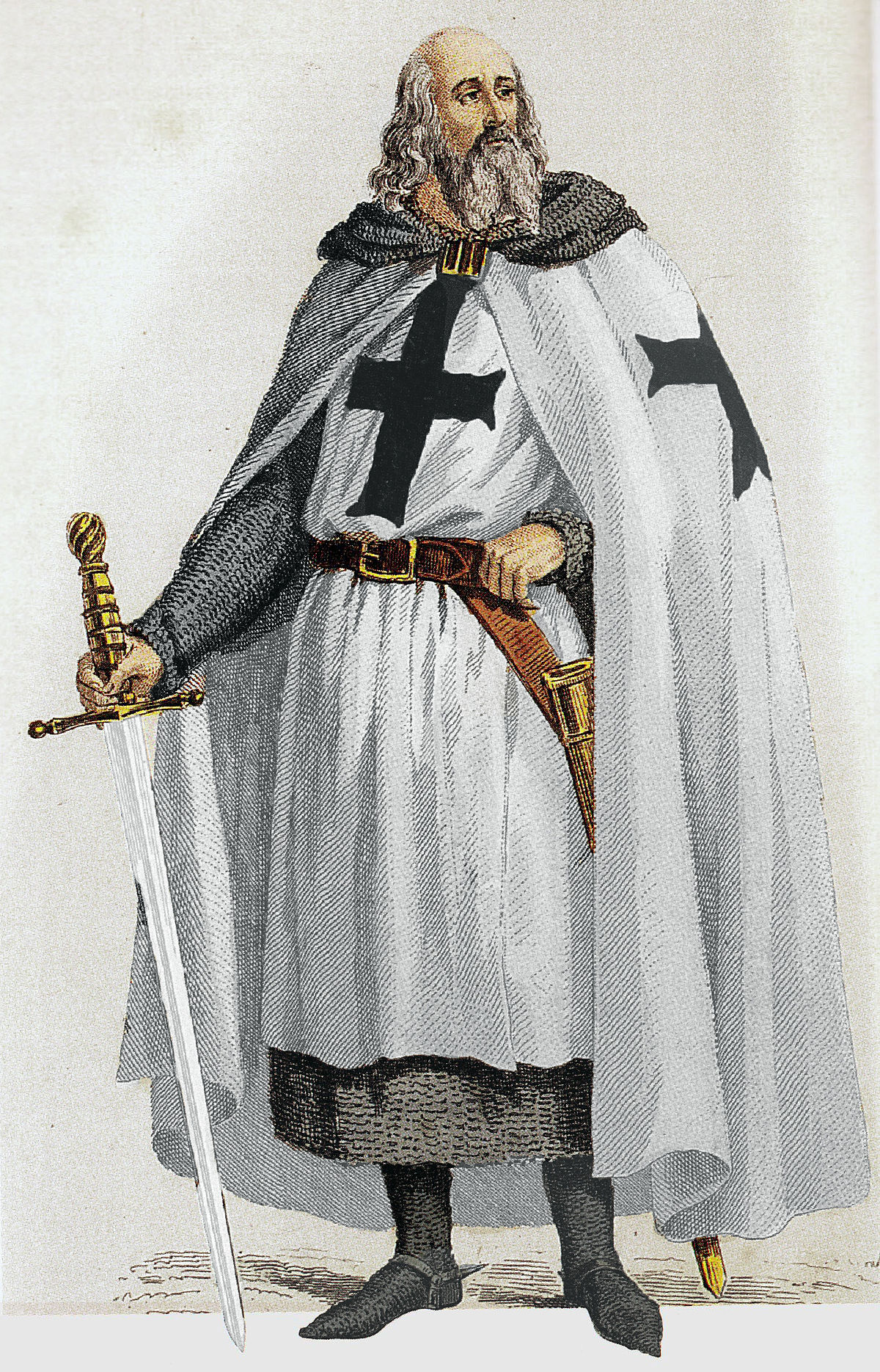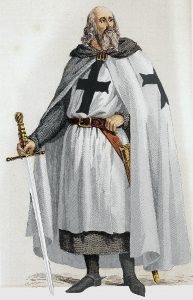810 years ago today, on October 13, 1307, Philip IV of France seized all the property of the Knight Templar and began a prolonged process of arresting members of the Order and trying for them for heresy. Wikipedia states:
“On 14 September, Philip took advantage of the rumors and inquiry to begin his move against the Templars, sending out a secret order to his agents in all parts of France to implement a mass arrest of all Templars at dawn on 13 October. Philip wanted the Templars arrested and their possessions confiscated to incorporate their wealth into the Royal Treasury and to be free of the enormous debt he owed the Templar Order. Molay was in Paris on 12 October, where he was a pallbearer at the funeral of Catherine of Courtenay, wife of Count Charles of Valois, and sister-in-law of King Philip. In a dawn raid on Friday, 13 October 1307, Molay and sixty of his Templar brother knights were arrested. Philip then had the Templars charged with heresy and many other trumped-up charges, most of which were identical to the charges which had previously been leveled by Philip’s agents against Pope Boniface VIII.
“The pope still wanted to hear Molay’s side of the story, and dispatched two cardinals to Paris in December 1307. In front of the cardinals, Molay retracted his earlier confessions. A power struggle ensued between the king and the pope, which was settled in August 1308 when they agreed to split the convictions. Through the papal bull Faciens misericordiam, the procedure to prosecute the Templars was set out on a duality, whereby one commission would judge individuals of the Order and a different commission would judge the Order as a whole. Pope Clement called for an ecumenical council to meet in Vienne in 1310 to decide the future of the Templars. In the meantime, the Order’s dignitaries, among them Molay, were to be judged by the pope.
“In the royal palace at Chinon, Molay was again questioned by the cardinals, but this time with royal agents present, and he returned to his forced admissions made in 1307. In November 1309, the Papal Commission for the Kingdom of France began its own hearings, during which Molay again recanted, stating that he did not acknowledge the accusations brought against his order.
Of Molay’s death, Henry Charles Lea gives this account:
“The cardinals dallied with their duty until 18 March 1314, when, on a scaffold in front of Notre Dame, Jacques de Molay, Templar Grand Master, Geoffroi de Charney, Master of Normandy, Hugues de Peraud, Visitor of France, and Godefroi de Gonneville, Master of Aquitaine, were brought forth from the jail in which for nearly seven years they had lain, to receive the sentence agreed upon by the cardinals, in conjunction with the Archbishop of Sens and some other prelates whom they had called in. Considering the offences which the culprits had confessed and confirmed, the penance imposed was in accordance with rule — that of perpetual imprisonment. The affair was supposed to be concluded when, to the dismay of the prelates and wonderment of the assembled crowd, Jacques de Molay and Geoffroi de Charney arose. They had been guilty, they said, not of the crimes imputed to them, but of basely betraying their Order to save their own lives. It was pure and holy; the charges were fictitious and the confessions false. Hastily the cardinals delivered them to the Prevot of Paris, and retired to deliberate on this unexpected contingency, but they were saved all trouble. When the news was carried to Philippe he was furious. A short consultation with his council only was required. The canons pronounced that a relapsed heretic was to be burned without a hearing; the facts were notorious and no formal judgment by the papal commission need be waited for. That same day, by sunset, a pile was erected on a small island in the Seine, the Ile des Juifs, near the palace garden. There de Molay, de Charney, de Gonneville, and de Peraud were slowly burned to death, refusing all offers of pardon for retraction, and bearing their torment with a composure which won for them the reputation of martyrs among the people, who reverently collected their ashes as relics.” (Note: the account varies by one day, not unusual for chronicles of the middle ages).”
Read the entire article here: https://en.wikipedia.org/wiki/Jacques_de_Molay.


